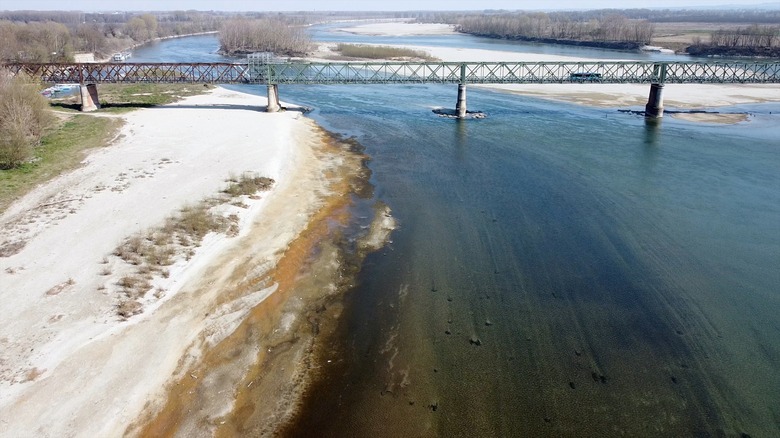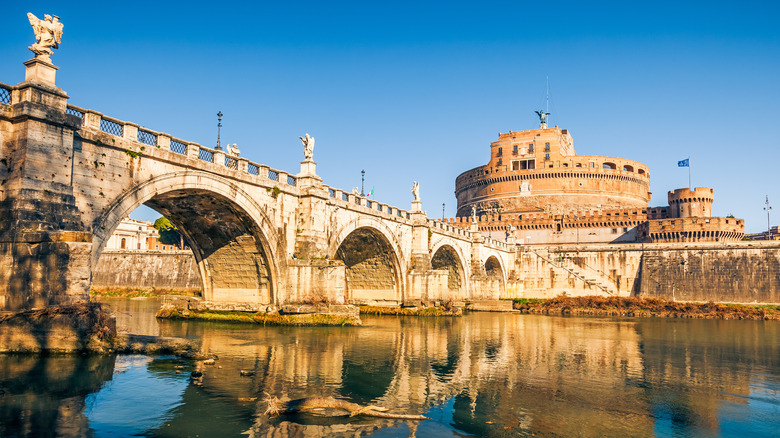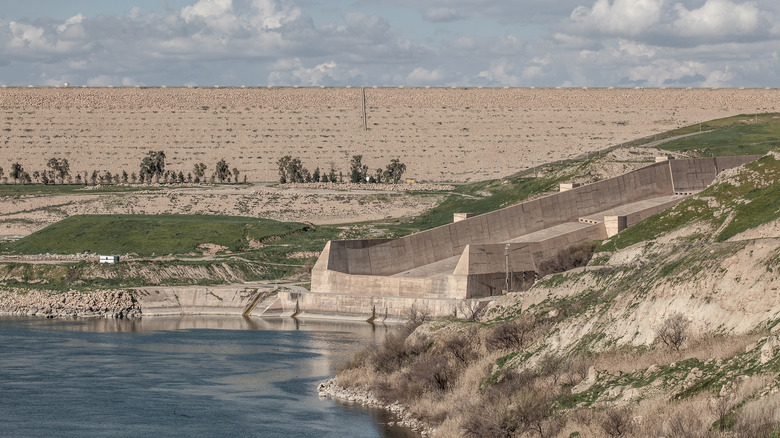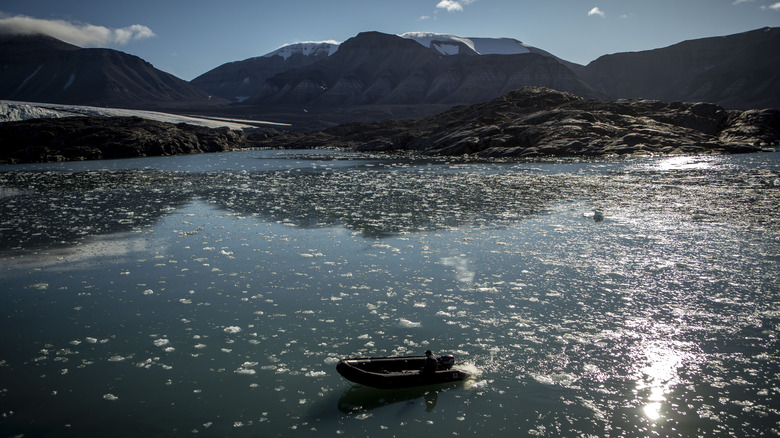Global Warming Played A Big Role In The Discovery Of These Millennium-Old Artifacts
The climate crisis is wreaking havoc on the Earth. You live on Earth, so you've probably noticed. Droughts, floods, wildfires, hurricanes, melting glaciers, and scorching heat are devastating the world we know. One thing they're also doing is revealing secret treasures from a past world we never did know. Thawing permafost awakens long-dead diseases from their subzero slumber. While tsunamis and floods sweep away the civilization we know, corresponding droughts in other places reveal the world of those who lived long before us — millennia, in fact — like a warning from the ancients that the crown jewels of our civilization, our airplanes, and our oil tankers will one day be nothing more than artifacts themselves (per Insider).
Millennia-old garbage appears, once preserved in now-melting glaciers. After decades submerged in water, droughts are reviving dead cities thousands of years old.
A drought in Maximino Perez Romero's town in Spain revealed a city once submerged underwater — one of the many that are surfacing worldwide. "I have a feeling of sadness. My feeling is that this is what will happen over the years due to drought ... with climate change," he told Reuters. He's right.
Drought has left the River Tiber thirsty
The River Tiber has witnessed the passing of civilizations for millennia. The Etruscans, the Romans, and now the Italians have all traversed its waters and paid tribute to its shores. The River Tiber snakes through the heart of Rome, a thriving metropolis that has outlived the civilization that built so much of it. That civilization, of course, was the Roman Empire.
Once upon a time, Rome included seven hills (via Encyclopedia Britannica) surrounding the Tiber River. Today, Rome looks quite different. The Tiber River is different, too. While cities have risen and fallen around its shores over the course of millennia, the Tiber River has continued to flow unperturbed. Yet in the era of the climate crisis, the river is thirsty. According to LiveScience, a severe heatwave and extreme droughts in Italy have sapped the river's water levels to abnormal lows. As the water level falls, the ghosts of history rise. That includes a bridge.
As water levels drop from drought, a bridge named for Emperor Nero emerges from the first century
In July 2022, WION News reported that Pons Neronianus (Nero's Bridge) had resurfaced from its water grave in Rome. In Castel Sant'Angelo, beneath the Vittorio Emmanuele II Bridge spanning the Tiber River, the item of ancient infrastructure — usually submerged, though making occasional appearances during low water levels — became exposed as Italy faced severe drought. The bridge is believed to have been built by Nero in the first century A.D. (although there's contention about this conclusion, according to LiveScience).
The Emperor Nero (who reigned 54 A.D. to 68 A.D.) was unpopular in his own time and is not remembered fondly by history. The fifth emperor of Rome, he presided over a complicated era marked by unrest and persecution. He did a few murders (per LiveScience) and lives on in history in the mythical image of a man who played the fiddle while his city faced crisis — while Rome burned. As every civilization and every human on earth faces impending disaster from the increasingly worsening climate crisis while we refuse to adapt, perhaps it is time to stop playing the fiddle ourselves.
The bridge today is little more than debris. Are scholars excited the bridge has resurfaced? Mary Boatwright, professor emerita of classical studies at Duke University, didn't seem too excited. She told LiveScience, "I'd personally rather it be submerged, and Italy not be threatened with drought."
A Mesopotamian metropolis resurfaces from the Bronze Age
Meanwhile, in Mosul, Iraq, months of drought and scorching heat sapped the city reservoir, Mosul Dam, of its water. As the reservoir's water levels dropped to dire lows, the past once again rose to greet us from its grave.
Once the beating heart of a Bronze Age metropolis called Kemune, a 3,400-year-old industrial complex from the late Mittani Empire surfaced to greet modern Mosul, Iraq (per Outlook India). Walls, fortifications, towers, a storage facility, and an industrial complex — usually submerged — stood exposed in formidable dignity. Archaeologists quickly descended upon the site to chase the ghosts of those who had inhabited the once-busy town square.
According to Bloomberg, jars containing 100 remarkably intact cuneiform tablets — which may lend new insight into what life was like during the late Mittani Empire — also saw the sun once more. That wasn't all: Artifacts belonging to ancient people who lived along the shores of the Tigris River were discovered as a result of Kemune's drought-induced resurrection.
In Norway, the Iron Age returns in the form of its garbage
It's no secret that one of the most overt and consequential terrors of the climate crisis is the glaciers melting. As these ancient walls of ice, snow, and prehistory begin to thaw, the debris of lives once lived millennia ago thaw with them. That's what's happening in Norway.
Discovering ancient humanity's discarded items and crumbling relics is increasingly common as ice melts in the north. In Norway in 2019, a passerby discover a 1,700-year-old sandal jutting from the melting snow. Smithsonian said the sandal was probably discarded by a traveler in the fourth century. Bloomberg reported that a team from the Glacier Archaeology Program discovered the cast-off relics of people who lived during the Iron Age. Among those items was a woolen tunic and an arrow from a reindeer hunting site with fletching intact, Bloomberg reported.
"[W]e expect to see more sites appearing," said Lars Pilø, who led the team that discovered the tunic. "We are melting back in time as the ice retreats."




